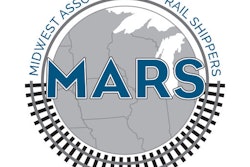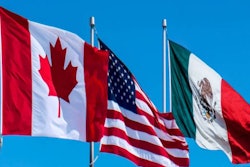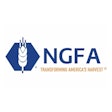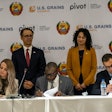
The U.S. Grains Council has a proven track record of educating producers to capture potential grain demand in countries in Asia and South America, and now it is taking similar steps in West Africa.
In 2017, USGC began engaging the poultry industry in West Africa because rapid economic growth and urbanization has increased the need for quality protein in the region, though improved market access, infrastructure and increased market orientation have been limited. Between Nov. 26 and Dec. 6, USGC and the Moroccan Poultry Association (FISA) sponsored its final West African training program of 2018 in Casablanca.
The program, designed as a train-the-trainer seminar, tapped the expertise of Dr. Harold L. Goodwin Jr., professor and poultry economist at the University of Arkansas, to develop content and facilitate a seminar focused on the economics of poultry and turkey production.
“Engaging with a leading U.S. academic institution such as the University of Arkansas' Center for Excellence in Poultry Science helps continue USGC’s efforts to professionalize the region’s poultry sector at the same time it allows USGC to be strategic in capturing long-term feed demand,” said Kurt Shultz, USGC senior director of global strategies who oversees programs in Africa. “Ultimately, an expanded poultry industry in West Africa will create export opportunities for U.S. grains and poultry equipment.”
This program, conducted at Avipole, FISA’s poultry training center in Casablanca, brought together 25 poultry producers and veterinary technicians from Cameroon, Mali, Togo, Burkina Faso and Cote d’Ivoire for a comprehensive short course covering all aspects of broiler production, including broiler management under hot climates, biosecurity on poultry farms and feed formulation. Technical training seminars were coupled with practical, hands-on sessions on broiler rearing as well as field visits to key commercial broiler farms, feed milling companies and poultry processing plants.
As part of the engagement, the West African team attended the 21st Marco Dawajine, FISA’s annual poultry exhibition. With upwards of 400 exhibitors and an estimated 12,000 national and international attendees, this show is the premier poultry industry event in North Africa representing all segments of the poultry industry. Attending allowed the West African team to view the latest innovations within the poultry industry and establish connections with key industry stakeholders.
“This year, more than 60 layer and broiler poultry producers from across West Africa have been trained under this joint program,” Shultz said. “The stronger the industry becomes, the higher the grain demand will be in this region.”
And the poultry industry is growing in this part of the world. For instance, poultry meat represents more than 40 percent of domestic meat production in Cameroon, and production is growing at an annual rate of 7 percent.
In addition to the trainings at Avipole, USGC also collaborated with FISA this year to conduct two in-country poultry training programs in Guinea and Cote d’Ivoire. Using a Council- and FISA-created training curriculum in partnership with the National Association of Poultry Meat Producers of Guinea (I’APVG) and the Interprofessional Poultry Association of Cote D’Ivoire (IPRAVI), this work aimed to identify the key needs for technical assistance within the poultry industry in these countries. More than 75 broiler, layer and egg producers attended these programs with a common goal of strengthening poultry production and management techniques among producers while also building the capacity of regional poultry associations and their members.
USGC believes low-cost, effective trainings like these in West Africa are vital to create the markets of the future for U.S. feed grain exporters.
West African countries have already started importing U.S. grains in all forms, with Cameroon, Cote d’Ivoire, Mali, Togo, Burkina Faso and Guinea importing 33,368 metric tons in MY 2017/2018, valued at just over $12 million. In comparison, neighbors Senegal and Nigeria imported about 267,000 metric tons in MY 2017/2018, valued at $52.3 million.
While these imports are still small relative to other regions, they provide a starting point for future demand growth for the U.S. feed grain industry. This program highlights how U.S. corn producers and West African poultry producers are linked through trade and USGC's mission of developing future markets to improve lives in West Africa.















